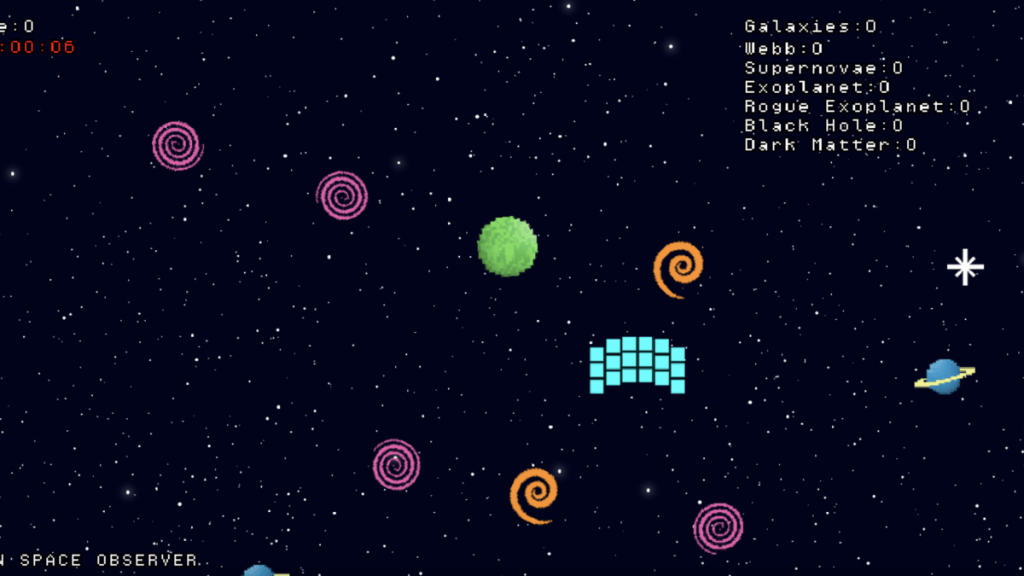
NASA has released an retro arcade game about the Nancy Grace Roman Telescope (Image Credit: Mashable)
NASA has released a browser-based game intended to spark interest in the Nancy Grace Roman Telescope. Creatively titled The Roman Space Observer Game, the retro arcade game by NALA Comm probably isn’t an accurate simulation of what it’s like to use NASA’s sensitive scientific equipment. Still, it’s a fun enough distraction.
“You have been given observation time on the Nancy Grace Roman Space Telescope,” the opening screen says, after players choose between English or Spanish. “You only have one minute to catch as many astrophysical objects and phenomena as possible.”
Similarly to Atari classic Asteroids, celestial objects fly across the screen at varying speeds. However, instead of avoiding or shooting them, players must use their arrow keys to chase these objects down. Once you get the Roman Space Observer’s detectors on top of an object, you need to quickly hit the spacebar to capture it and rack up points.
The most common objects are orange and pink spirals, which are meant to signify galaxies and are worth seven points each. Other targets include the yellow hexagonal Webb Telescope (75 points), white starburst supernovae (15 points), blue ringed exoplanets (10 points), green rogue exoplanets (25 points), and pitch black dark matter (40 points) and black holes (50 points).
The Roman Space Observer Game is a fairly enjoyable little game, and certainly better than some other promotional video games companies have created. I found the hardest object to catch was the Webb Telescope, which flew across my screen like it was gunning for a gold medal. Meanwhile, the most difficult objects to spot were the dark matter and black holes, which barely showed up on the black starred background. You basically have to keep an eye out for disappearing stars to find them.
You can play The Roman Space Observer Game here.
The Nancy Grace Roman Space Telescope is an observatory scheduled to launch within the next few years. Though its primary mirror is the same size as the Hubble Space Telescope’s mirror, measuring 7.9 feet in diameter, its field of view is 100 times larger.
“Roman’s gigantic field of view will enable the mission to create infrared images that are around 200 times larger than the Hubble Space Telescope can provide while revealing the same rich level of detail,” wrote NASA. “The spacecraft is expected to collect far more data than any other NASA astrophysics mission before it.”





